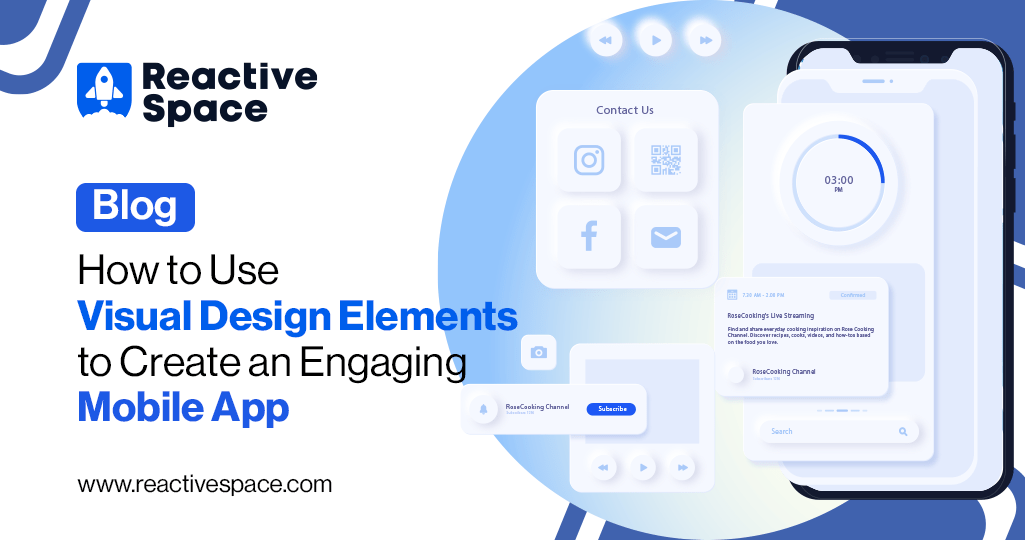
In today’s digital age, mobile applications have become an integral part of our lives. Whether it’s for entertainment, productivity, or communication, mobile apps play a significant role in enhancing our daily experiences. However, with millions of apps available in the app store and Android, how can developers ensure that their apps stand out and engage users effectively? The answer lies in understanding and leveraging visual design elements to create an engaging mobile app.
What are the visual elements of a mobile application?
Visual design elements encompass a wide range of components, including colors, typography, imagery, and layout. These elements not only contribute to the overall aesthetics of the app but also play a crucial role in guiding user interaction and conveying the app’s purpose and functionality. Let’s explore how app developers can utilize visual design elements to create captivating and user-friendly mobile applications.
How do you create designs for mobile applications?
Understanding Visual Design Elements
Visual design elements are the building blocks of a mobile app’s user interface (UI) and user experience (UX). They include:
Colors: They evoke emotions and can influence user behavior. By carefully selecting a color palette that aligns with your app’s branding and target audience, you can create a visually appealing and cohesive user interface.
Typography: Typography refers to the style, size, and arrangement of text within the app. Choosing the right fonts and typography hierarchy can improve readability and enhance the overall aesthetic appeal of the app.
Imagery: Images and graphics can convey information more effectively than text alone. Incorporating high-quality images, icons, and illustrations can make your app more visually engaging and intuitive to navigate.
Layout: The layout of an app determines the arrangement and organization of its elements. A well-designed layout ensures that users can easily find what they’re looking for and navigate through the app seamlessly.
What are the 4 design areas to build a successful mobile app?
To build a successful mobile app, it’s essential to focus on four key design areas:
User Interface (UI) Design: The user interface design encompasses the visual elements of the app, including layout, colors, typography, and interactive elements such as buttons and icons. A well-designed UI creates a visually appealing and intuitive user experience, making it easy for users to navigate the app and perform tasks efficiently.
User Experience (UX) Design: User experience design focuses on the overall usability and functionality of the app. It involves understanding user needs, behaviors, and motivations to create a seamless and enjoyable experience. UX design encompasses elements such as information architecture, navigation flow, and interaction design, ensuring that users can accomplish their goals effectively within the app.
Performance Optimization: Performance optimization is crucial for ensuring that the app runs smoothly and responds quickly to user interactions. This includes optimizing app loading times, optimizing latency, and optimizing memory usage to provide a seamless experience, even on devices with limited resources or network connectivity.
Accessibility: Accessibility design involves making the app usable and accessible to all users, including those with disabilities or special needs. This includes providing alternative text for images, ensuring proper color contrast for readability, and implementing screen reader support and keyboard navigation. By prioritizing accessibility design, you can ensure that your app is inclusive and can be used by everyone, regardless of their abilities.
How do you make an engaging app?
Tips for Creating an Engaging Mobile App
Now that we understand the importance of visual design elements let’s explore some practical tips for creating an engaging mobile app:
Define Your App’s Purpose: Before diving into the design process, it’s essential to have a clear understanding of your app’s purpose and target audience. This will help you tailor your visual design elements to meet the needs and preferences of your users effectively.
Keep it Simple: Avoid cluttering your app with unnecessary elements. A clean and minimalist design not only looks more professional but also enhances usability and user experience.
Focus on User Interaction: Pay attention to how users interact with your app and incorporate visual cues such as buttons, icons, and animations to guide them through the interface. Interactive elements make the app more engaging and intuitive to use.
Optimize for Different Devices: With the increasing variety of mobile devices and screen sizes, it’s essential to design your app with responsiveness in mind. Ensure that your application looks and functions seamlessly across various devices and platforms and also includes security testing.
Incorporating Visual Design Elements in Mobile App Development
When it comes to implementing visual design elements in mobile app development, there are several tools and frameworks available to streamline the process. For example:
Flutter: Flutter is a popular cross-platform framework for building mobile apps and their development with expressive and flexible UIs. Its rich set of widgets and customizable design elements make it ideal for creating visually stunning and engaging apps.
iOS App Development: For developers targeting the iOS platform, tools like Xcode and SwiftUI provide intuitive interfaces for designing and prototyping visually appealing apps. With SwiftUI’s declarative syntax, developers can create dynamic and interactive user interfaces with ease.
Conclusion
In conclusion, visual design elements play a crucial role in creating engaging and user-friendly mobile applications. By understanding the principles of visual design and incorporating them thoughtfully into your app development process, you can create apps that not only look great but also provide a seamless and enjoyable user experience. Whether you’re a seasoned app developer or just starting, remember to prioritize user needs and preferences and leverage visual design elements to create compelling and successful mobile apps.
Remember, the key to creating an engaging mobile app lies in utilizing visual design elements effectively. By incorporating colors, typography, imagery, and layout thoughtfully, you can create a visually stunning and intuitive app that captivates users and keeps them coming back for more. So, go ahead, unleash your creativity, and create the next big hit in the world of mobile apps!



